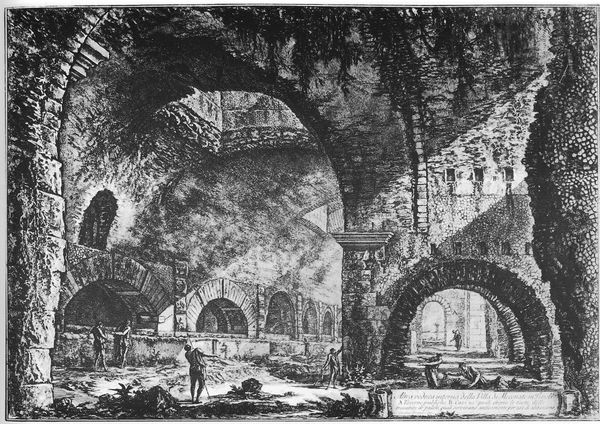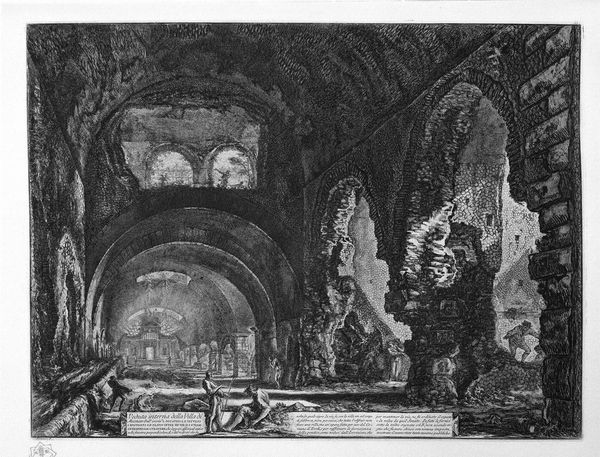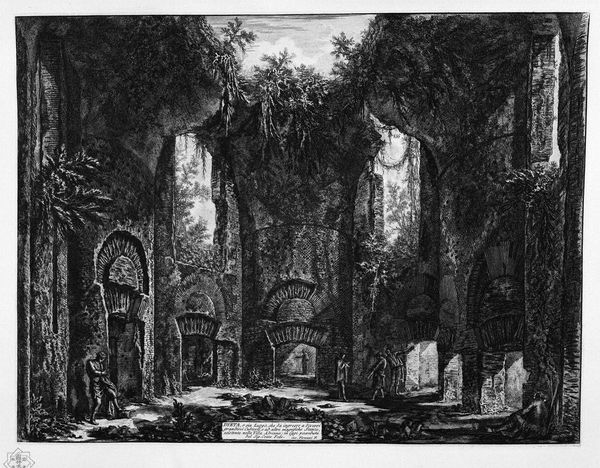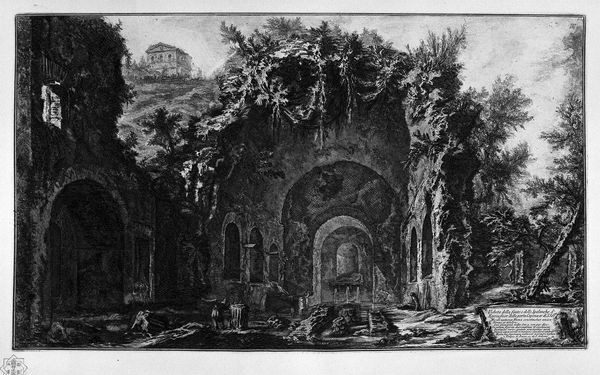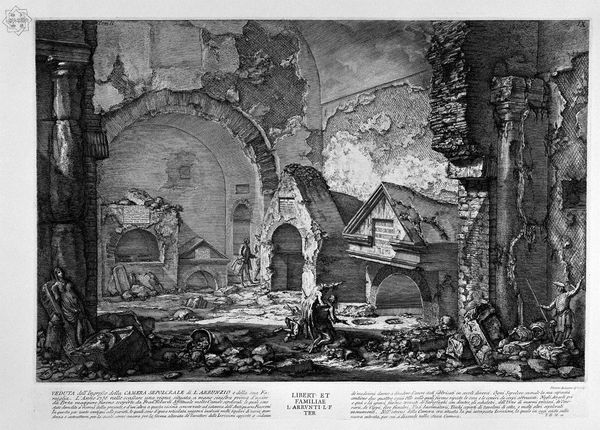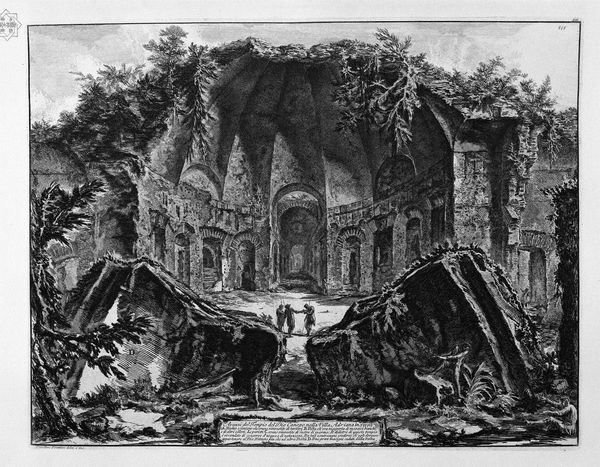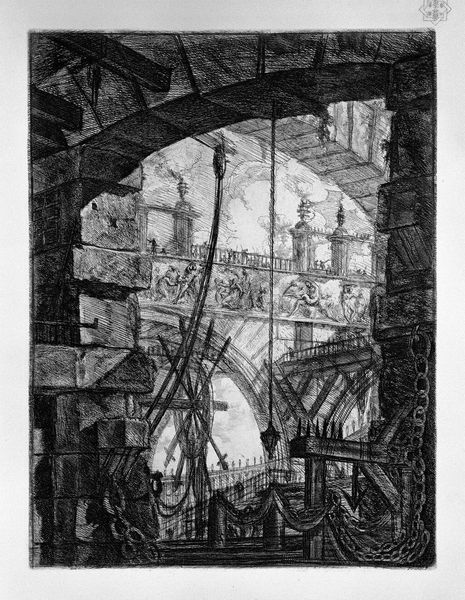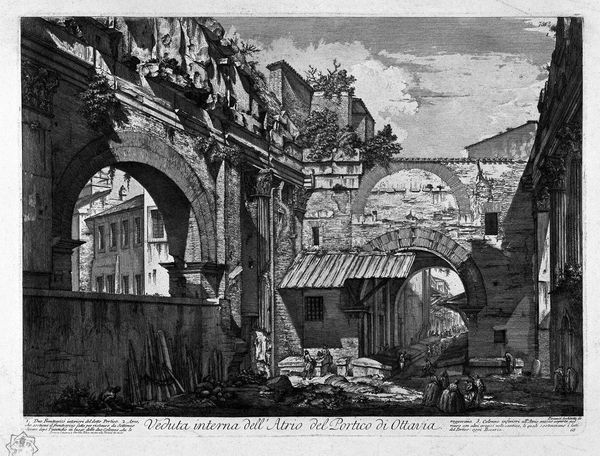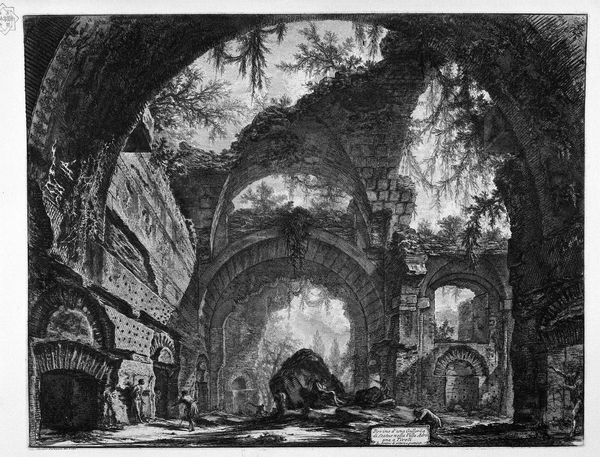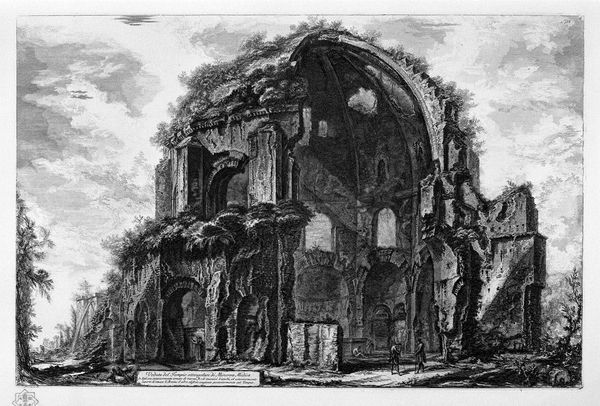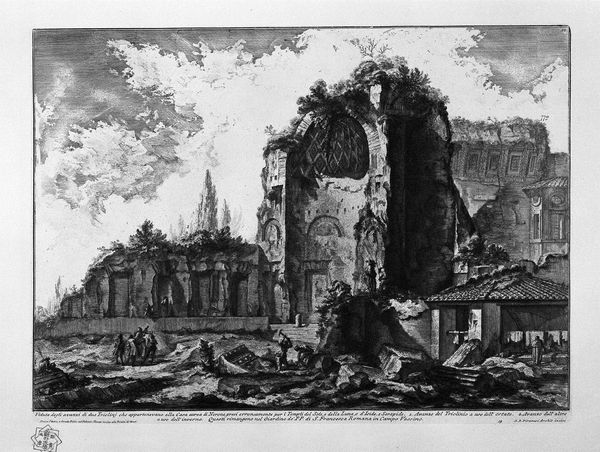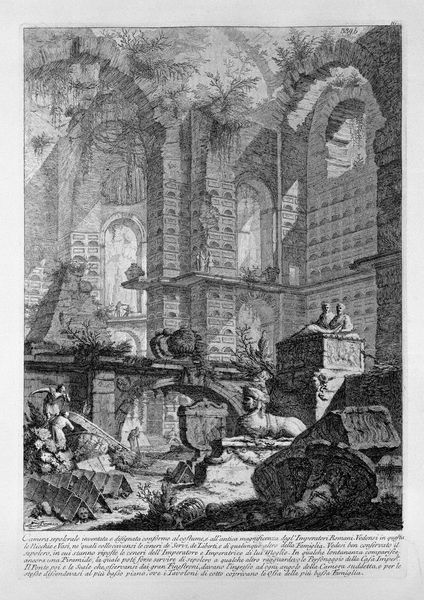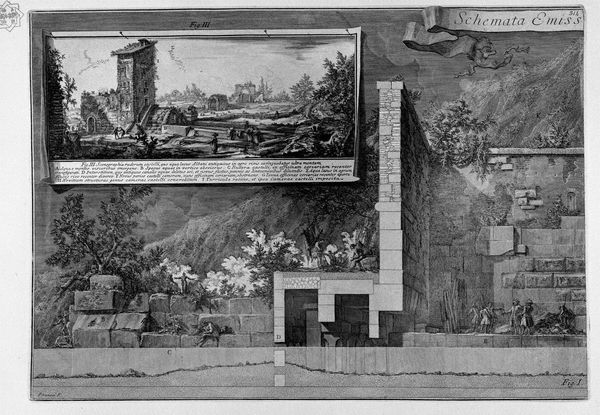
print, etching, architecture
#
neoclassicism
# print
#
etching
#
sculpture
#
landscape
#
holy-places
#
ancient-mediterranean
#
history-painting
#
architecture
Copyright: Public domain
Editor: This is "Another interior view of the Villa of Maecenas at Tivoli," an etching by Giovanni Battista Piranesi from 1767. I’m struck by the scale of it, these monumental ruins. It makes me feel quite small and insignificant. What do you see in this piece? Curator: I see more than just ruins; I see a commentary on power and the cyclical nature of history. Piranesi, working in the late 18th century, was deeply critical of contemporary society, particularly the aristocracy. Look at how he renders these figures – they're dwarfed, almost lost within the grandeur of a past empire. Doesn’t it suggest a critique of present-day structures that inevitably crumble and fade? Editor: So you're saying that it's not just about depicting an old building, but about using it to make a statement about society? Curator: Exactly. Piranesi, through his architectural fantasies, dissects the mythos surrounding power. The overwhelming scale suggests a sort of suffocating weight, implying a possible struggle for individuals trapped beneath institutions or ideals. Consider, too, the popular obsession with the classical world at this time. Do you think Piranesi fully buys into the narrative of Roman glory? Or, could this ruin represent a call to disassemble or confront current oppression? Editor: I see what you mean. It makes me reconsider how the neoclassical style, usually seen as celebratory of order and reason, can also be a space for critique and questioning of current events, like some form of commentary about our identities and what remains as they fade, gender and race included, when institutions collapse. Curator: Precisely. And by doing so, he invites us to question not only the past, but our present, too. These spaces of the past help to reshape the conversations that are relevant today and that is something so valuable. Editor: I will now see more than old stones when viewing artwork of this period, and remember to always apply current theory to understand context better! Thanks!
Comments
No comments
Be the first to comment and join the conversation on the ultimate creative platform.
